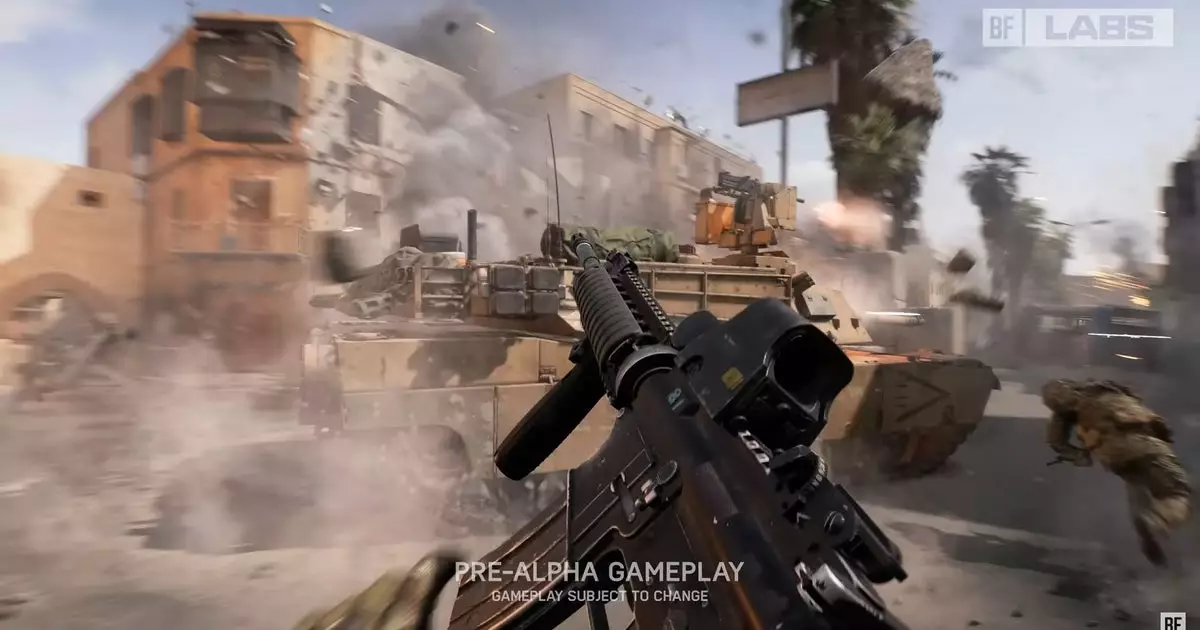The Battlefield series has continually pushed the boundaries of how players engage in large-scale warfare, blending tactical gameplay with chaotic action. With expectations running high for the upcoming title, often referred to as Battlefield 6, the recent promotional video promises an evolution of the franchise. However, beneath the surface of flashy visuals and veteran producer commentary lies a complex interplay of development challenges, public anticipation, and the ever-present influence of corporate strategies.
The promotional material presents a classic tableau: explosions, gunfire, and a striking visual of debris crashing down, all hallmarks of the franchise that fans have come to expect. While the producers excitedly speak about “leveling up” the “core experience,” one cannot help but scrutinize their vague promises. The attempt to capture the essence of what makes Battlefield unique seems to center around the familiar act of demolishing structures with a rocket launcher. It raises questions about whether innovation is genuinely on the horizon or if old habits are being repackaged with a fresh coat of paint.
Even within the final seconds of the video, where glimpses of actual gameplay occur, there’s a poignant realization that the heart of Battlefield appears little altered—soldiers traverse a war-torn landscape amid crumbling buildings and rumbling tanks. Gamers have seen this before, which invites skepticism about any significant enhancements the new title may offer.
Another focal point of discussion is the collaboration among multiple studios: DICE, Criterion, Motive, and Ripple Effect. The amalgamation of talent sounds promising, yet this collaboration raises eyebrows regarding management efficacy and the product’s final cohesiveness. With such a diverse team, producing a unified gaming experience can be a Herculean task, and history shows that large-scale teamwork can often lead to conflicting visions and disjointed gameplay mechanics.
Moreover, Criterion’s commitment to Battlefield appears to come at a cost, particularly as their development plans for a new Need for Speed installment are stalled. The behind-the-scenes dynamics become even more convoluted when considering the shuttering of Ridgeline Games, which previously would have contributed to the campaign’s narrative. These circumstances beg the question: does the restructuring of talent enhance the quality of the game or detract from it?
In a bid to garner player interest and input, EA has introduced “Battlefield Labs,” allowing players the opportunity to engage in playtesting. Conceptually, this initiative is a double-edged sword. On one hand, it provides a sense of involvement and anticipation among fans, whereas, on the other, the reality of such programs often entails signing non-disclosure agreements (NDAs) and accessing test builds that may be incomplete or flawed. While EA’s initiative mirrors practices seen in other studios—like Full Circle with their Skate series—it underscores a broader trend of outsourcing game testing to the public, which elicits mixed feelings regarding transparency and development integrity.
As the gaming community eagerly awaits more revelations about Battlefield 6, the mixture of excitement and trepidation is palpable. With promises of innovation tempered by familiar mechanics, a diverse yet potentially chaotic development team, and the embrace of player-driven testing, the game’s trajectory remains uncertain. Only time will tell if this new installment can break free from its past and truly redefine the Battlefield experience for a new generation of gamers. The anticipation is high, yet as history has shown, excitement does not always equate to execution.

